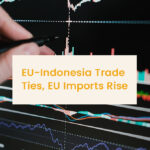Banks are facing a risk that stricter environment, social and governance criteria could worsen the trade finance gap by cutting off access to financing for companies that need it most. It could hinder their expansion of sustainable trade finance offerings to meet growing corporate demand. Trade finance comprises financial instruments that support a company’s imports and exports.
“Trade Finance” – Financial instruments that companies use to facilitate trade, such as letters of credit, supply chain finance, performance guarantee, and import/export loans.
Risk at Large
As trade finance banks embrace ESG, some industry players worry that implementing stricter sustainability criteria into funding conditions will make it harder for companies to access trade finance. According to the reports, the trade finance gap, which reflects the disparity between demand and supply for trade finance, is already at an all-time high that reached $1.7 trillion in 2020. Here’s a look at the trade flows of G20 countries.

If sustainable trade finance structures are punitive and static toward companies that do not meet certain ESG criteria, it could worsen some entities’ access to funding.
Collaborative Trade Finance
Across the industry, banks and other financial institutions are collaborating to drive future growth in sustainable trade finance. Unlike traditional green loans and bonds, which focus on a company’s own transition, sustainable trade finance can help firms drive change in their upstream and downstream supply chains. Banks and financial institutions face a challenge to design sustainable trade finance structures that are inclusive.
Market Sustainability
How to define how sustainable trade will impact which companies can and cannot access financing with an ESG label? If more companies are to benefit from sustainable trade finance, the industry needs to develop appropriate metrics to measure the sustainability of trade outside of developed economies. For example, African countries will face this challenge and their economies will be impacted more than outside the region.
Certainly, changing ESG criteria impacts the trade finance of banking and financial institutions. Now they have to develop strategies accordingly to deliver trade finance offerings and to meet growing corporate demand. As a result, they will be able to maximize their profits and take their business to new heights.




